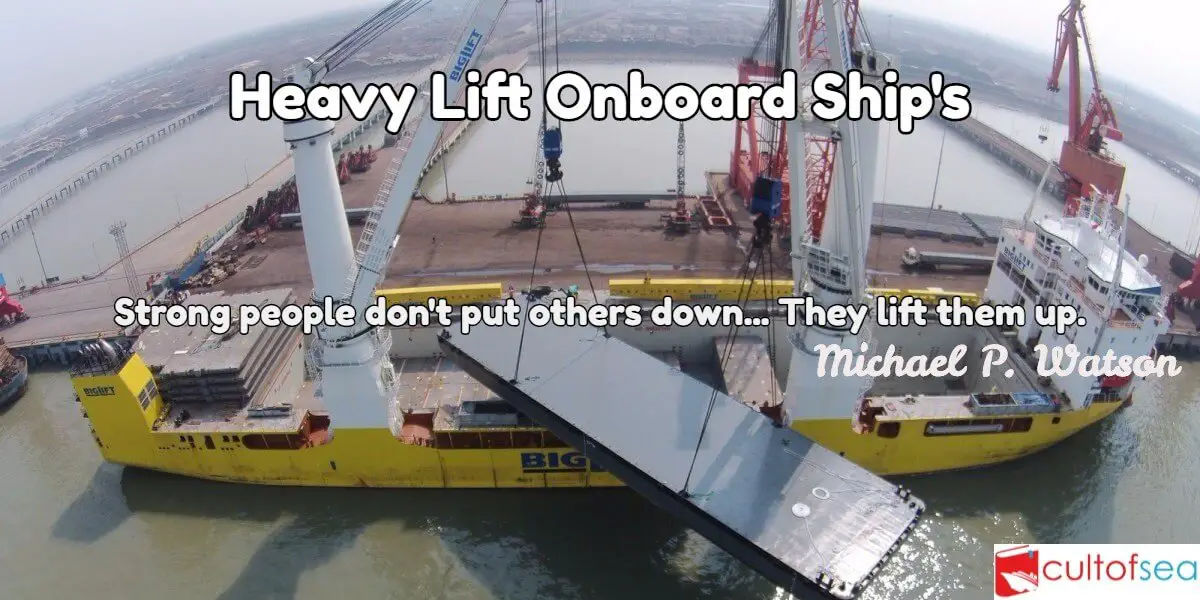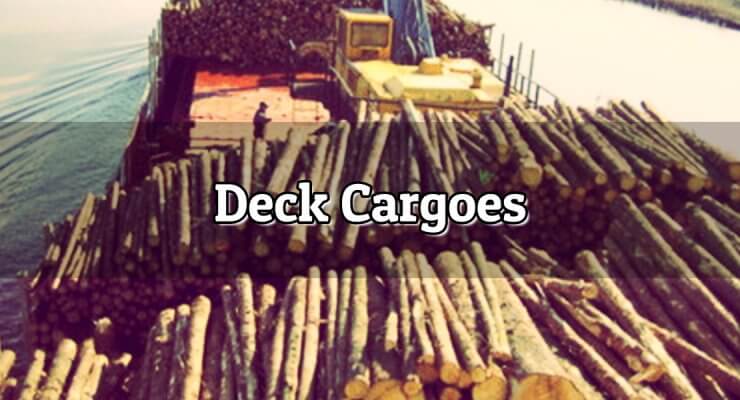Precautions for Heavy Lift OnboardCarry out a “Risk Assessment” prior to commencing the operation to ensure that all possible areas of hazard are taken account of and that all risks are at an acceptable, tolerable risk level. Ensure that the stability of the vessel is adequate to compensate for the anticipated angle of heel that be experienced when the load at the maximum angle of outreach. All free surface elements should be reduced or eliminated, if possible, to ensure a positive value of GM throughout the operation. Any additional rigging, such as “preventer backstays” should … [Read more...]
Deck Cargoes
The phrase ‘deck cargoes’ refers to items and/or commodities carried on the weather deck and/or hatch covers of a ship and thereon exposed to sun, wind, rain, snow, ice and sea, so that the packaging must be fully resistant to, or the commodities themselves not be denatured by such exposure.Deck cargoes, because of their very location and the means by which they are secured, will be subjected to velocity and acceleration stresses greater, in most instances, than cargo stowed below decks.The stowage, lashing and securing of cargoes, therefore, require special attention as to method and … [Read more...]

